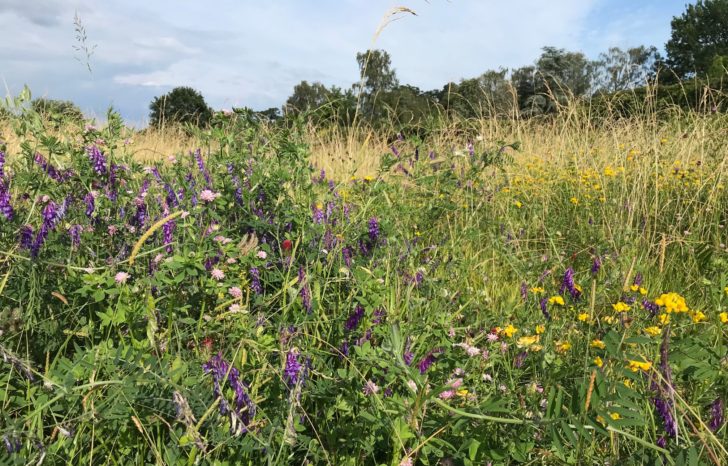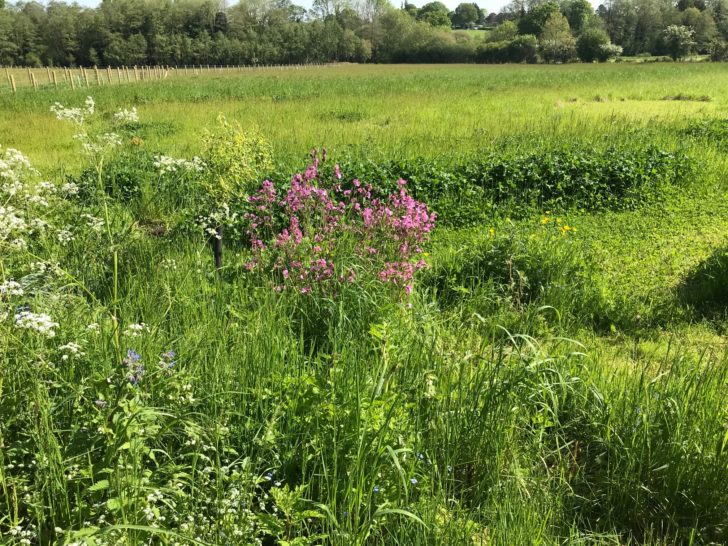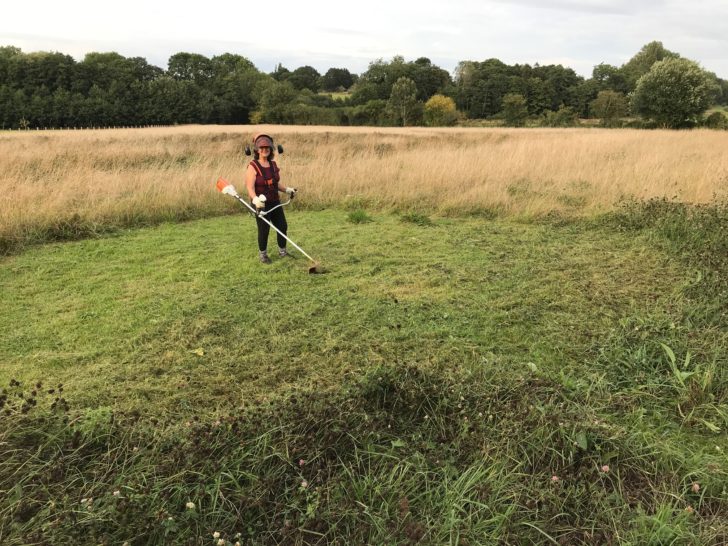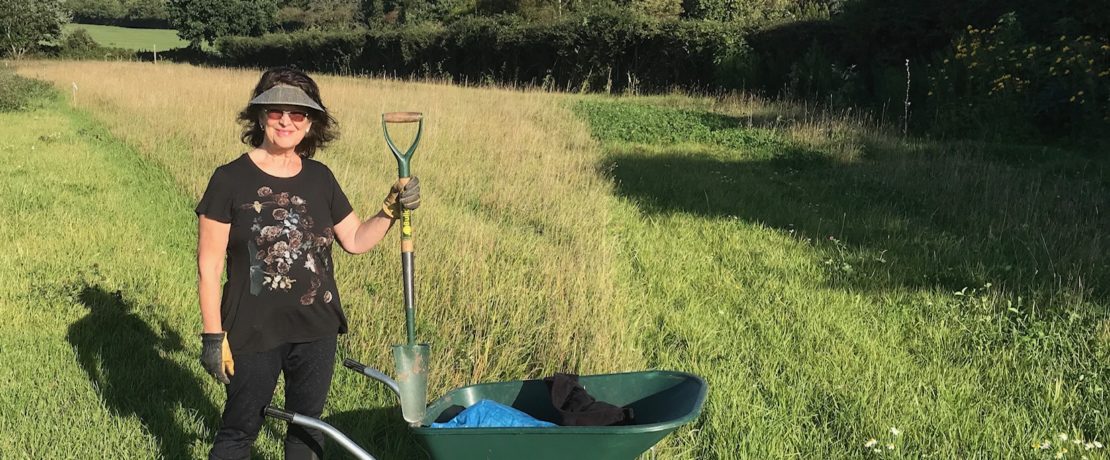Creating my biodiverse wildflower field
Artist, archaeological illustrator and CPRE supporter Sheena Howarth had a small field in bad shape. Now it’s a thriving, biodiverse haven teeming with local wildlife! She shares her story with us and explains the process behind the magical transformation.
We recently bought a small three-acre field in Worcestershire. Previously, this field had been used to grow crops of feed corn and was regularly sprayed with fertilisers and herbicides. The soil was in bad shape, full of weeds, thistles of all kinds, dock, nettles and brambles.
My hope was to create a more varied habitat in the field to help bring a greater biodiversity. Having been an organic gardener for the past 50 years, l had some idea of how to do this. One of the first steps to create a wildflower meadow involved removing the topsoil. Unknown to me, the field had already been sown and fertilised. l wasn’t able to go to the expense of removing the topsoil, although I knew that it’s the best way to create a wildflower meadow – most wildflower seeds do better when sown in bare soil, not in a field that had just been sown with grass seed and fertilised! l had to work with what I had, which left me wondering: what plants and flowers can you sow into a field of grass?
I chose the following seeds:
- phacelia
- persian clover
- hairy vetch
- yellow trefoil
- linseed
- crimson clover

By the end of 2019, l had added several kilos of mixed native grass seed and a wildflower mix from Cotswold Seeds. We also added several kinds of clover in the hope that this would quickly bring in the pollinators. I waited eagerly to see what would happen.
In the spring of 2020, l was delighted to see just how many wildflowers came up. There was a wonderful mix of cornflower, yellow rattle, campions, corncockle, bird’s foot trefoil, field daisies, yarrow, poppies, chicory and many more. The clovers did well too, and soon the space was coming to life with birds, bees and butterflies. It was wonderful to watch how quickly a field can recover over a year.

Birthday celebrations
Last year was my 70th birthday, so l decided that l would plant 70 trees! I ordered hedge starters from The Woodland Trust and some single trees which I planted in January. It was lovely to work outside in the field, l enjoyed it so much. I paced myself, putting in six to eight trees a day and the work was soon done. I had to put canes and spirals round each sapling otherwise the muntjac deer or the rabbits would have eaten the bark.
To add to the trees, l dug up volunteer sapling trees from our garden, including hazel, oak, holly, hawthorn, ash, rowan, cherry plum, willow and cotoneaster. I planted them in the field and soon l had 170 trees! Not bad for the efforts of a lone 70-year-old; my husband has no interest in working outside in the mud and cold – I think I inherited the tree planting bug from my father who had a similar obsession.

Hedgerow help
I had another idea: thicken up two very long old hedgerows that unfortunately had been flail cut on both sides. l could see that this harsh cutting had disturbed the habitat and l wanted to restore it to create a thick ground cover for wildlife and a hedge full of berries for the birds. I also wanted to help improve the habitat for one of my favourite creatures, hedgehogs!
At the end of the summer a local entomologist, Steve Whitehouse, carried out an evening moth count, making a list of the 41 he found. He visited again a year later and his moth count was 97!
Now, it’s a waiting game. l can hardly wait for spring and summer to see how things grow and change. Over the past year I was impressed to see how well these new saplings grew. We were lucky to have plenty of rain to see them through the brief drought and I worked very hard to keep each sapling free and clear of weed and grass competition. I worked on three to four small trees per week. I was also able to put a few spadefuls of mulch around most of the growing trees and many have grown by a metre.
The field will have all the elements to take off on its own without too much help from me soon – just some mowing at the end of the year. I’ve had to do some weed-control of certain invasive species; on my daily walk around the edges of the field l usually root up some of the ‘undesirables’ by hand. After spending several weeks in vain trying to dig up the thistles l had to resort to spraying. ln total, I planted 480 trees during the winter and spring.
Today, the field is already full of little voles scurrying around in the grass. There have been frogs and even a grass snake! It has really come back to life. It’s interesting to compare it to the other side of the field, which is just plain grass, regularly mown like a lawn. One day, I want to be able to sit in the field and watch the birds, bees and butterflies that come by to visit and feel that my work is done.
Not everyone is lucky enough to have their own field, but there are lots of ways you can nurture nature in your own outdoor spaces – here are some ways you can connect with your local countryside






